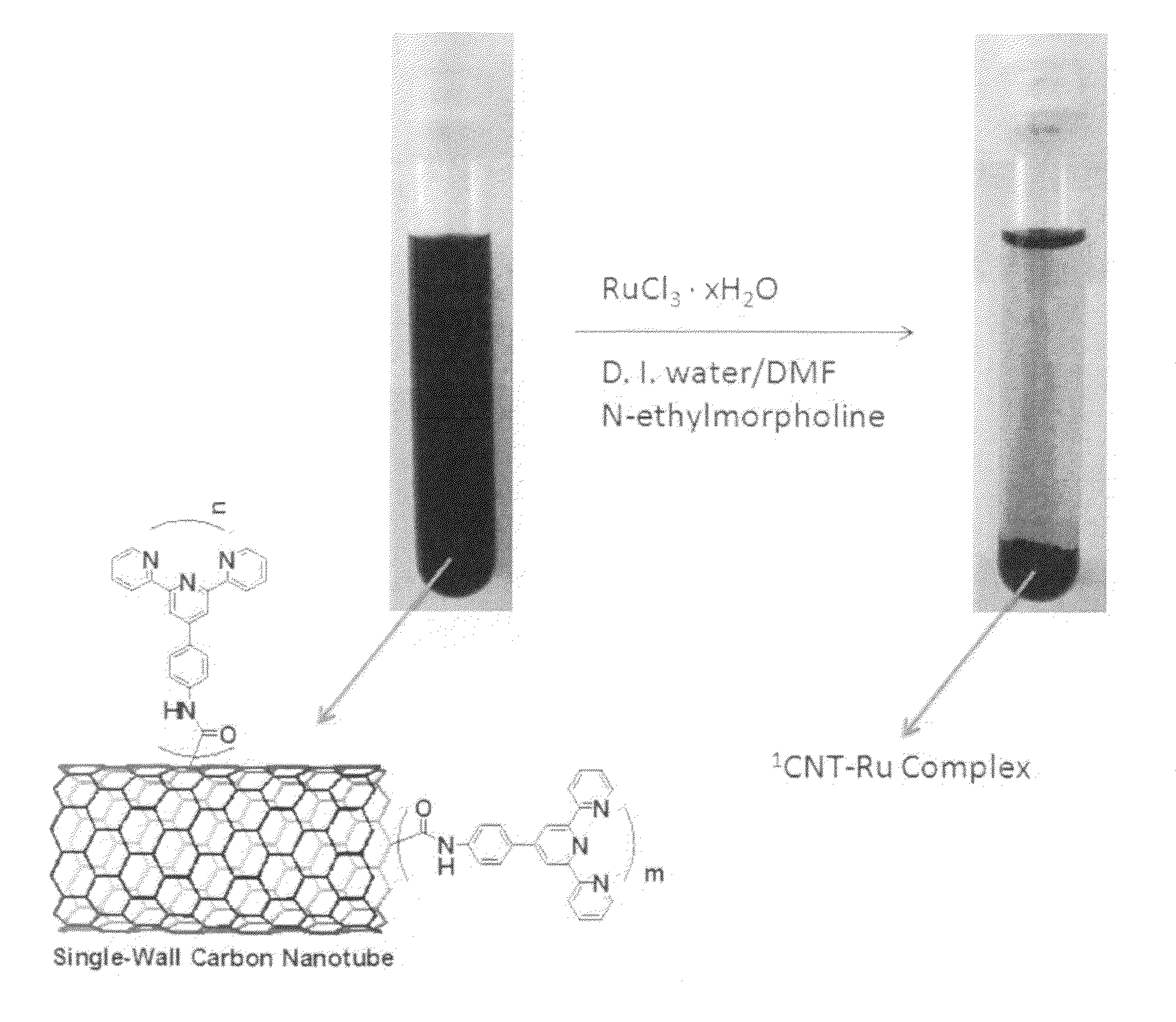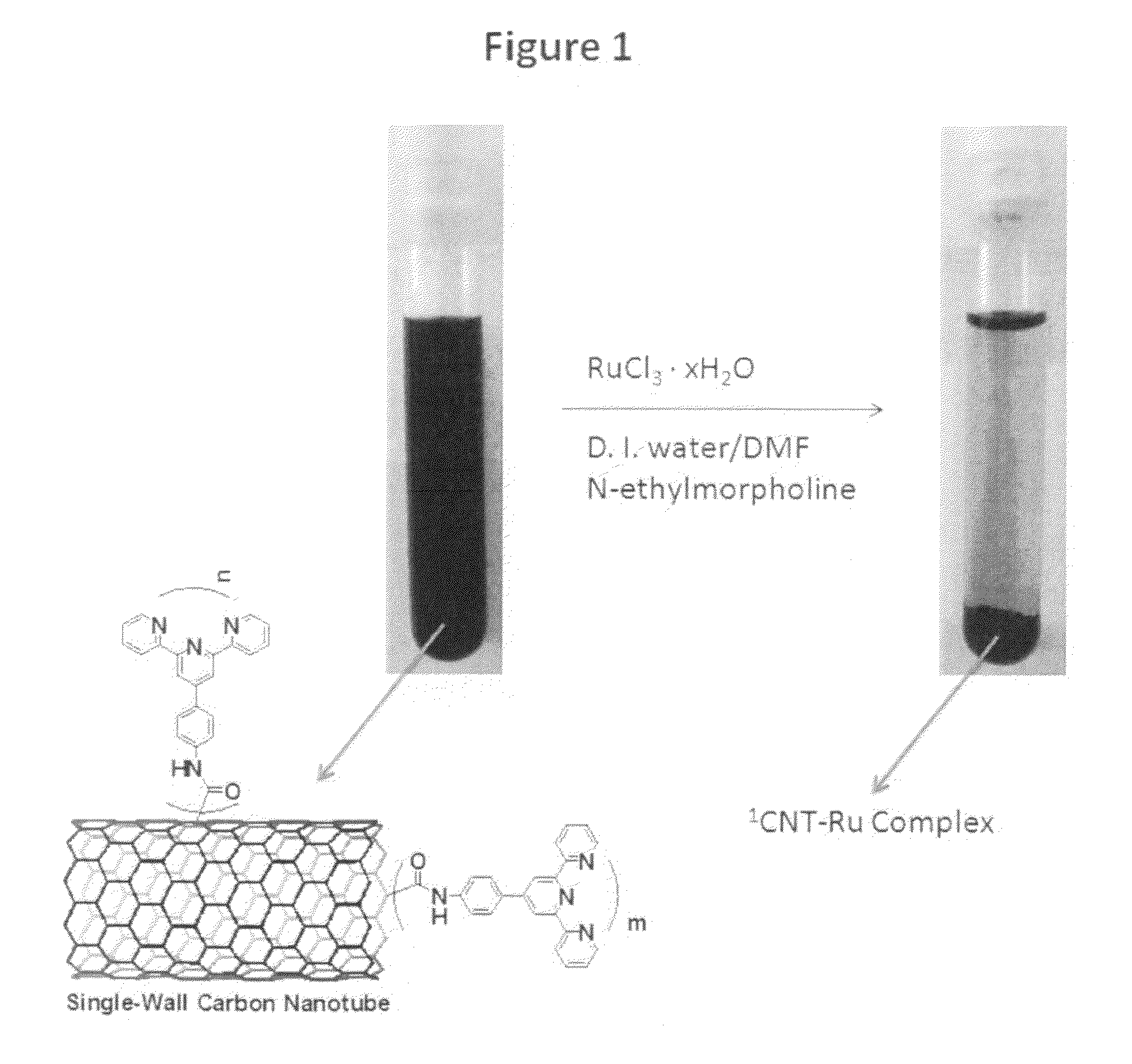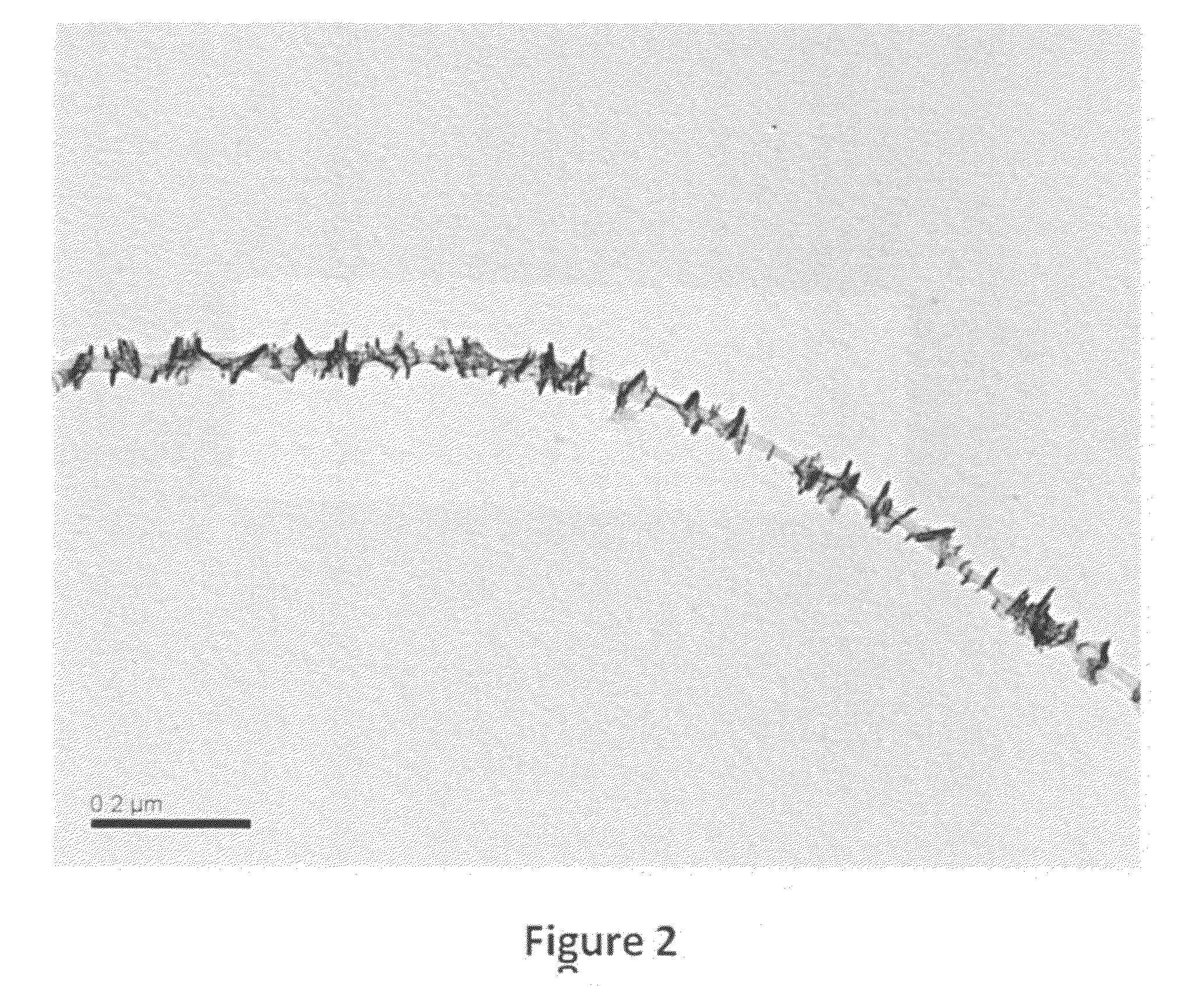Carbon nanotubes using for recovery of radionuclides and separation of actinides and lanthanides
- Summary
- Abstract
- Description
- Claims
- Application Information
AI Technical Summary
Benefits of technology
Problems solved by technology
Method used
Image
Examples
examples
[0069]Diethylcarbamoylmethylphosphonate or CMPO functionalized CNTs:
Diethylcarbamoylmethylphosphonate or CMPO Functionalized Multi-Wall Carbon Nanotubes
[0070]
1) 250 mg of carboxy-modified multi-wall carbon nanotube (MWNT-COOH) was sonicated with 30 ml of thionyl chloride for 30 minutes, and then stirred for 24 hours at room temperature to generate carbonyl chloride functional group (MWNT-COCl), that was directly used for next step without further purification.
2) MWNT-COCl in DMF was mixed with ethylenediamine (10.0 ml) and placed in an ultrasonic bath for 2 h at room temperature. The mixture was stirred for another 24 h at 90° C. The resulting solid was separated by vacuum filtration using 0.2 μm Millipore nylon membrane filter and repeatedly washed with acetone and methanol, respectively. The resulting solid was dried in a vacuum at room temperature, generating 255 mg of (MWNT-CONHCH2CH2NH2).
3) 853 mg of (MWNT-CONHCH2CH2NH2) was suspended in dried CH2Cl2 (25 ml) and Et3N (7 ml), th...
PUM
 Login to View More
Login to View More Abstract
Description
Claims
Application Information
 Login to View More
Login to View More - R&D
- Intellectual Property
- Life Sciences
- Materials
- Tech Scout
- Unparalleled Data Quality
- Higher Quality Content
- 60% Fewer Hallucinations
Browse by: Latest US Patents, China's latest patents, Technical Efficacy Thesaurus, Application Domain, Technology Topic, Popular Technical Reports.
© 2025 PatSnap. All rights reserved.Legal|Privacy policy|Modern Slavery Act Transparency Statement|Sitemap|About US| Contact US: help@patsnap.com



